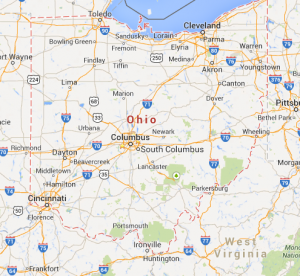Good Friday
Katie Harmon-McLaughlin, Spiritual Formation Ministries

He was despised and rejected by others; a man of suffering and acquainted with infirmity; and as one from who others hide their faces he was despised, and we held him of no account. Surely he has borne our infirmities and carried our diseases; yet we accounted him stricken, struck down by God, and afflicted. But he was wounded for our transgressions, crushed for our iniquities; upon him was the punishment that made us whole, and by his bruises we are healed. -Isaiah 53:3-5
Are we moving toward Jesus, the peaceful One?
This question causes me to wince and squirm on Good Friday. I am tempted to evade it, hold it at a distance, let it collect dust in a corner of my soul.
Several years ago, we reflected on the meaning of crucifixion with our community. We printed images and stories of current events that are hard to confront. In our hands we held flimsy pieces of paper that contained statistics of child homelessness and global hunger, images of refugees on fragile boats in a violent sea. One by one, we came forward and reverently placed our images, news stories, statistics onto the wooden cross until it was full-a mosaic of the world’s brokenness. We confessed, raged, offered our lament. We prayed for resurrection and justice and peace. It was a stunning and troubling image of incarnation.
Thomas Merton took the incarnation seriously when he reflected on the ongoing crucifixion of Christ in the world today through acts of injustice and exploitation. “Murders, massacres, revolution hatred, the slaughter and torture of…bodies and souls, the destruction of cities by fire, the starvation of millions, the annihilation of populations and finally the cosmic inhumanity of nuclear genocide: Christ is massacred in His members, torn limb from limb; God is murdered in [humanity]” (A Thomas Merton Reader, p. 320).
What is this guiding question asking of us on Good Friday?
Is it suggesting that sometimes moving toward Jesus, the peaceful One, means moving toward the world’s suffering? Does it mean we are to keep our eyes and hearts open to “hear the pleading of mothers and fathers in all nations who desperately seek a future of hope for their children” (Doctrine and Covenants 163:4a)? What does it mean that our welfare resides in the welfare of those daily crucified through acts of violence, oppression, and exploitation? “As long as we are on earth,” writes Merton, “the love that unites us will bring us suffering by our very contact with one another, because this love is the resetting of a Body of broken bones” (A Thomas Merton Reader, p. 320).
Oh, Lord, hear our prayer. Rend our hearts. Accept our confessions. Hold our grieving. Stoke the fires of our anger at injustice. Grant us the wisdom and strength for the healing of the body of Christ in the world today. Give us courage to practice resurrection, to live in your peace.
Prayer Phrase
Are we moving toward Jesus, the peaceful One?
Spiritual Practice
Gospel Contemplation (Mark 11:1-11)
Each week during Lent, you are invited to pray with a different gospel story from the life of Christ. Use your senses and imagination to enter the text. Allow it to come to life in you, observing details, noticing interactions, even engaging in dialogue. Notice where you find yourself in the story and how you feel about what is happening. Notice what it evokes in you or invites of you. Take time to journal or enter silent prayer to reflect on your experience and to sense where the Spirit may be leading you through this scriptural encounter.
Today’s Prayer for Peace
Engage in a daily practice of praying for peace in our world. Click here to read today’s prayer and be part of this practice of peace.











